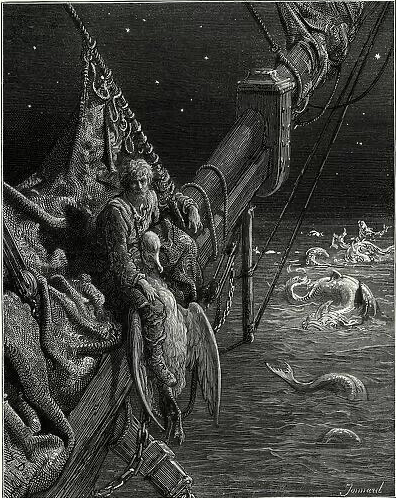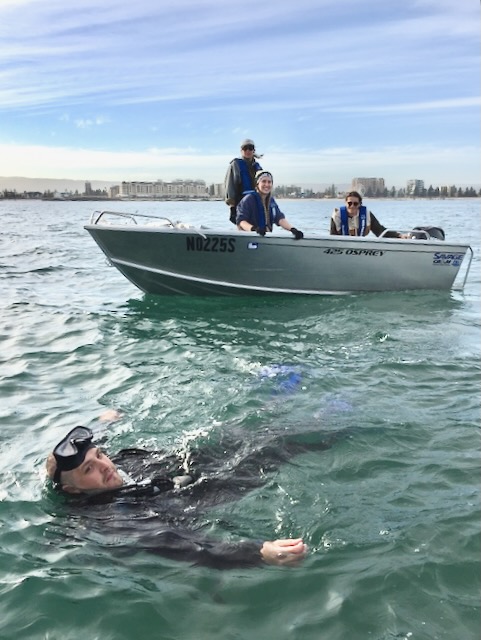Professor Andy Lowe, Interim Director of the Environment Institute, gives a brief snapshot of the vital environmental research – and actions – underway at our University.
The problems we face as a planetary species are daunting in scale and volume – but can be solved through a combination of research (to identify the problem and innovate new products or practises that solve the problem) and socio-economic-political frameworks required to drive change in systems.
The Environment Institute at the University of Adelaide is developing a broad range of research-based solutions for the planetary boundaries we face, including:
-
- Restoring our terrestrial and marine ecosystems;
- Preparing for and developing resilient ecosystem plans in the face of fires and floods;
- Developing more efficient water use systems and policies;
- Protecting our biodiversity from deforestation, illegal logging, illegal wildlife trade and over exploitation;
- Examining biodiversity extinction dynamics and developing conservation plans;
- Designing production and urban landscapes that bring back nature, biodiversity and nature’s benefits to people.
Developing solutions that solve multiple issues while harnessing multiple benefits are more likely to be adopted and successfully implemented.
Research to tackle the biodiversity crisis
The loss of biodiversity is perhaps one of the greatest environmental challenges we face. Extinction is forever, and the loss of biodiversity also means the loss of important ecosystem services – also known as nature’s benefits to people – that biodiversity and natural habitats bring, including clean air and water, soil integrity, carbon sequestration and nutrient recycling, pollination and a range of human physical and mental wellbeing benefits from being in and around nature.
My research group (www.growelab.com) is passionate about developing applied research to address some of these most pressing environmental challenges.
We work mainly on plant and forest ecosystems to create holistic solutions for ecosystems worldwide.
We work in three main areas: discovering and protecting biodiversity; managing and conserving biodiversity; and valuing and restoring biodiversity.

Bushfire Impact Kangaroo Island – Tom Hunt
Discover and protect
It’s amazing to think that we still don’t know how many species there are on Earth. Best estimates are around 10 million but we have only put names to around 15% of these. The rest, mainly insects, we refer to as the dark taxa – we know they’re out there but we don’t really know what they are or where they are.
Recently DNA methods to help identify species – DNA barcoding – have made the task of identifying species quicker and easier and building an ID reference library can help with hard to identify species.
Case study: We’ve applied these methods to help control the trade in illegally logged timber products. Our group has been part of the United Nations Office of Drugs and Crime working group to develop scientific methods to identify timber in supply chains, and we have also been working with a Singapore based company, DoubleHelix Tracking Technologies, to apply these methods to global supply chains.
Manage and conserve
Biological diversity, including genetic diversity is an important asset to maintain. Natural ecosystems, agriculture and forestry, and other natural resource value chains all depend on the management and conservation of plant diversity. For natural systems, genetic diversity can help maintain resilient populations in the face of environmental pressures, such as climate change.
For managed and exploited species, this variation is the important basis for selection of new crop plants and varieties that have unique features and adaptations. We collaborate with international partners to develop and raise awareness of tools and best practices for the management of biological resources.
Case study: Indigenous plants of Australasia are becoming increasingly valuable crop and forest assets worldwide. But harnessing their genetic potential will require effective and socially responsible management of their seeds, strains, and digital sequences.
As a co-lead of the DivSeek International Network’s Regional Hub for Australasia, our lab coordinates a team of crop scientists and policy experts to understand the gaps and opportunities in the way we utilise plant genetic resources in our region.
Value and restore
In the coming century, we will need to restore world ecosystems and adapt to a changing climate.
Our group develops the restoration practices required to recover lost ecosystems and build communities resilient to future challenges.
The value of services provided by intact ecosystems is still poorly studied. Our work quantifies the value of a range of ecosystem services (such as pollination, microbial function, and carbon sequestration) to help motivate restoration programs.
Case study: Many of our food crops depend on feral honey bees and Australian native bees for pollination. But these crucial pollinators are at risk. Agricultural landscapes tend to offer little food for them when crops are not in flower. What’s more, Varroa mite incursions could wipe out feral honey bees altogether.
To safeguard pollination services, our group led the Secure Pollination through Revegetation project. We created a DNA barcode library to identify pollen collected by bees, worked with industry partners to design and implement revegetation strategies for agricultural landscapes, and explored the link between plant diversity and pollinator diversity.
Story by Andy Lowe.
People power – how you can help
A critical role of the University is to help convene the societal debate, and develop solutions to the problems we are facing. It’s no use researchers spending time and effort if they are developing irrelevant solutions or develop potentially useful solutions that then sit on the laboratory shelf and are not adopted.
Regional groups have the capacity to develop locally applied solutions that can ultimately overcome global challenges. Using this ethos, the Environment Institute works with local communities and partners to develop solutions and has helped support a new mode of community engagement over the past year through the Dynamic State initiative (dynamicstate.com.au).
By bringing together a diverse range of scientists, artists and entrepreneurs, as well as community and local government leaders, we have developed a framework to tackle global issues.
Members of the Environment Institute are passionate, bold and interdisciplinary.
Why not get in touch with a research idea, collaboration or if you’d like to help us by volunteering your time and skills. We value creativity and a healthy attitude toward balancing life and work. We strive for diversity and aim to create a positive work environment that fosters the personal and professional development of our team.
Please contact us at: environment@adelaide.edu.au
Article extracted from the University’s Winter 2023 Lumen Magazine.







